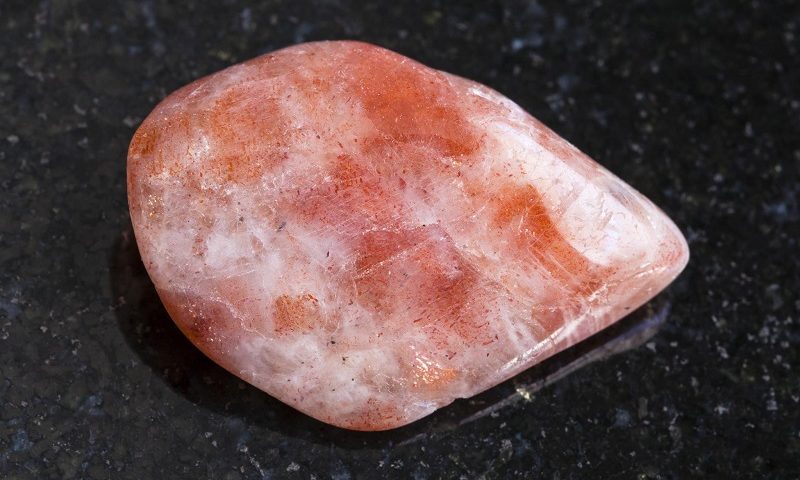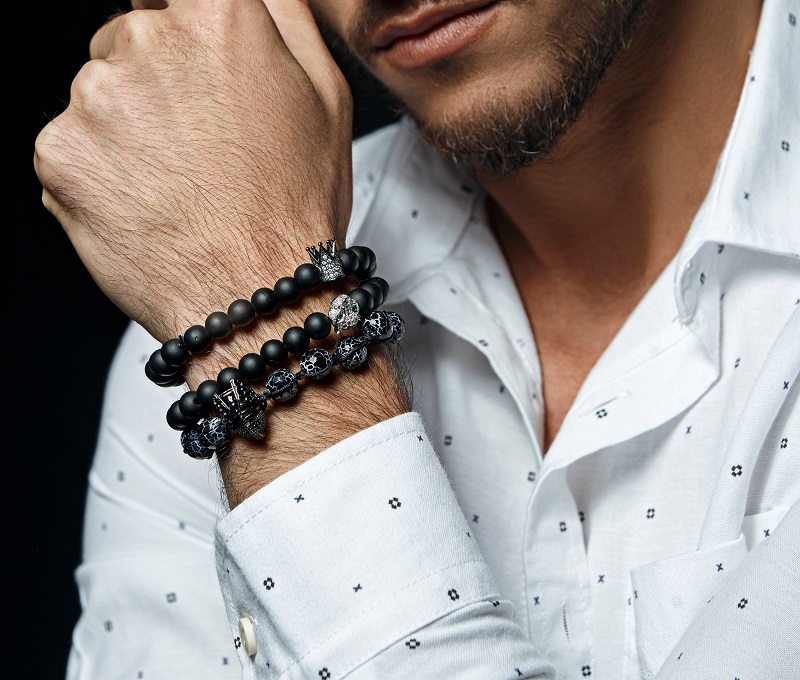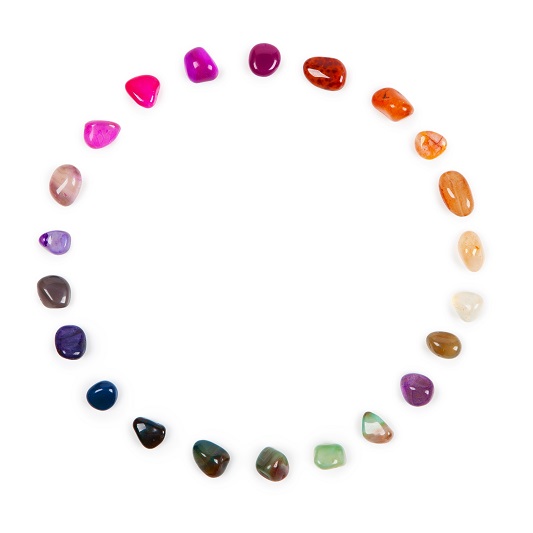Sunstone, gemstone of the week

Petrified Wood, Gemstone of the Week
26th April 2018
Cabochons, Gemstone of the Week
11th May 2018Best known for its iridescent appearance, Sunstone is a member of the Feldspar family. The iridescence of the stone is sometimes referred to as ‘aventurescence’ or ‘schiller’. In the gem trade, Sunstone is occa-sionally labelled as ‘aventurine feldspar’; however, the term ‘aventurine’ is rarely used today, other than when referring to green Quartz. While most specimens exhibit some level of iridescence, the intensity of this varies depending on the size of inclusions. Typically crafted from Hematite or Goethite, smaller inclu-sions make the optical phenomenon more intense. In stones with larger inclusions, the appearance can seem glittery or metallic.
Sunstone is usually orange or red in colour with a spangled appearance. As the appearance can is reminis-cent of the sun, the mineral was given the name ‘Sunstone’. Today, there are a variety of different types of Sunstone on the market. These varieties include Plagioclase Feldspar and Potassium Feldspar; these are referred to as Oligoclase Sunstone and Orthoclase Sunstone. Today, the most common variety is Oli-goclase Sunstone. In this article, we explore Sunstone in more detail.
How to Identify Sunstone
To the untrained eye, Sunstone can be identified by its iridescent appearance. However, it can some-times be confused with other iridescent gemstones such as Aventurine and Moonstone. To distinguish Sunstone from similar gems, it’s important to take into account the orange-red colour of the stone. Pro-fessionals can identify Sunstone in a variety of different ways. For instance, Sunstone is significantly soft-er than Aventurine, with a hardness rating of 6 on the Mohs scale. The density of the stone is around 2.6, making it less dense than it’s competitors. Sunstone can also be identified by its perfect cleavage, which is uncommonly seen in other gemstones.
Different Colours and Types of Sunstone
Sunstone is usually orange-red in body colour with a metallic iridescence. This optical phenomenon is caused by inclusions of Goethite, Pyrite, or Hematite. The only exception to this rule is Sunstone from Oregon. Specimens found in this location contain Copper inclusions, instead. The iridescence of Sunstone can make it appear different colours. Typically, the shimmer will seem gold, red, yellow, or orange, but occasionally, it can appear blue or green.
Most Sunstone is translucent or opaque, though fine-quality specimens can be transparent. When the mineral is cut and polished, it exhibits a strong lustre. Giving the stone a sparkling appearance, cut and polished specimens are often used in designer jewellery. Additionally, the mineral is used to make orna-mental carvings and for crystal healing.
When used in jewellery, Sunstone is typically faceted with a flat surface. This technique maximises the effect of the inclusions, making the stone sparkle as much as possible. Occasionally, Sunstone that exhib-its asterism is cut en cabochon. In this case, the stone is cut into an oval, round, or pear.
As mentioned previously, Sunstone is a member of the Feldspar family. As the most commonly occurring group of minerals, large quantities of Sunstone are mined each year. Though most varieties of Feldspar are similar, their composition varies slightly. The group is split into two main branches: Potassium Feldspar and Plagioclase Feldspar. Varieties of Potassium Feldspar include Amazonite and Moonstone. Varieties of Plagioclase include Sunstone and Labradorite; this type of mineral is composed of calcium and sodium. On the gemstone market, the different varieties of Sunstone are referred to as ‘Oregon Sunstone’, ‘Cat’s Eye Sunstone’, and ‘Star Sunstone’.
Where is Sunstone Found?
Today, Sunstone is found in various locations worldwide. Unlike many gemstones, there is no single source from where it is commercially mined. Some of largest deposits are found in India, Madagascar, Canada, and Russia. The mineral is also mined from the USA, with notable locations including Pennsylva-nia and Oregon. Oregon is renowned for its fine-quality Sunstone that includes traces of Copper.
Healing Properties of Sunstone
Like most gemstone, Sunstone boasts a variety of healing properties. Due to the stones vibrant colouring, it is often associated with playfulness and childhood. The stone is thought to maintain a balance between work and play, helping the beholder to escape the stresses of adult life. The stone also allows you to make peace with past mistakes, encouraging you that imperfections help you to grow. Encouraging the beholder to let go of traumatic memories, it can help you to move forward after unpleasant events. With this in mind, Sunstone can be beneficial to those going through a divorce or separation. Additionally, the mineral helps you to love yourself unconditionally. Often referred to as the ‘shining light of optimism’, Sunstone will always guide you towards happiness, safety, and security. Whether you’re experiencing financial problems or you’re suffering from anxiety or depression, you can rely on Sunstone to provide the guidance you need.
When used in crystal healing, Sunstone connects with all of the Chakras. Working to cleanse and balance the body, the stone clears and activates the energy pathways. In addition to allowing the body to func-tion optimally, this cleansing process can also increase the power of other gemstones.
In Summary
Good-quality Sunstone is popular all over the world. Today, the stone is found in various locations world-wide with notable sources including India, Canada, Madagascar, and the USA. Loved for its iridescent and sun-like appearance, fine-quality Sunstone is often used in gemstone jewellery. Whether you’re hoping to use the stone for its benefits within crystal healing or you’re looking for a beautiful new addition to your jewellery collection, purchase a piece of Sunstone to reap the benefits.




